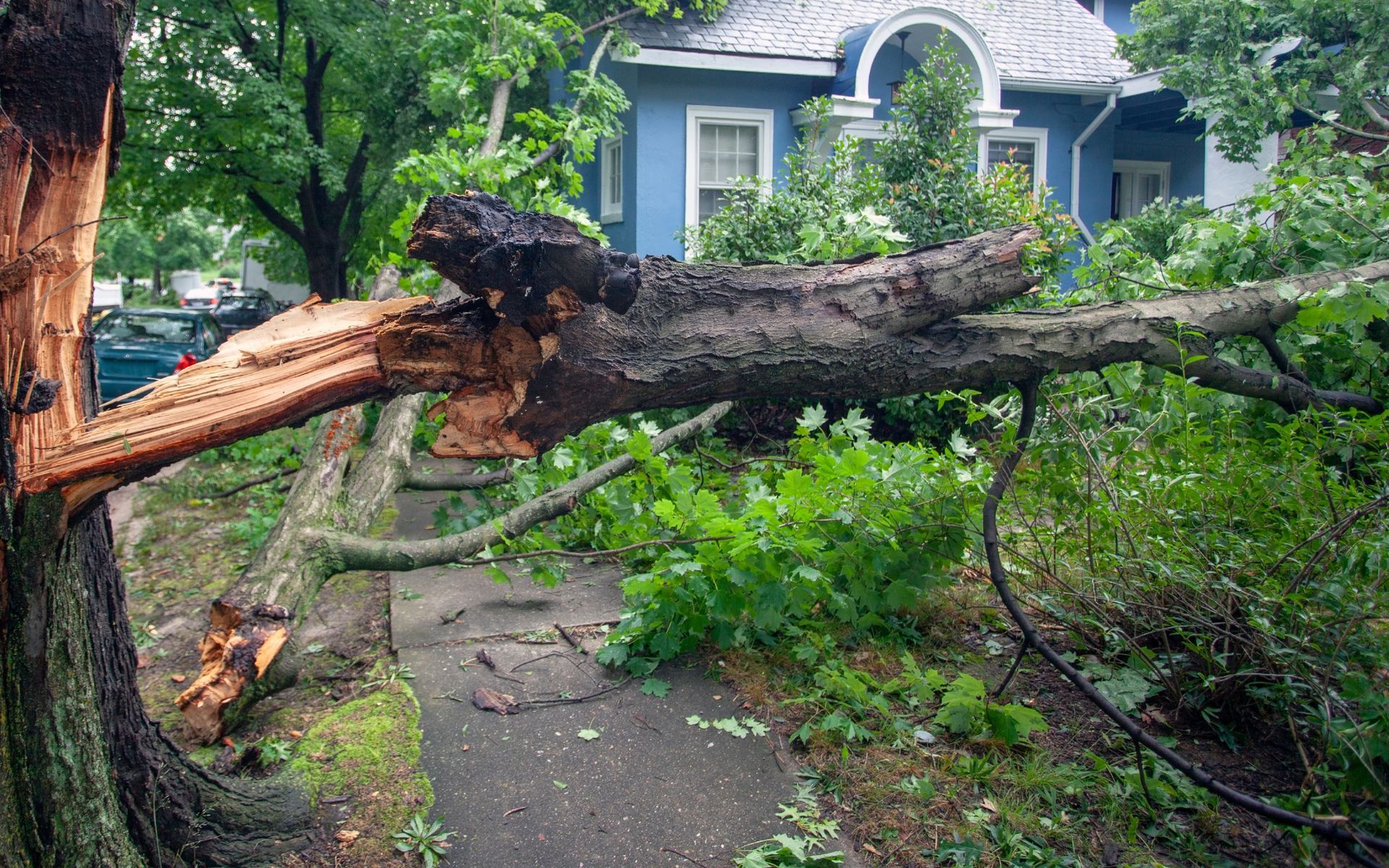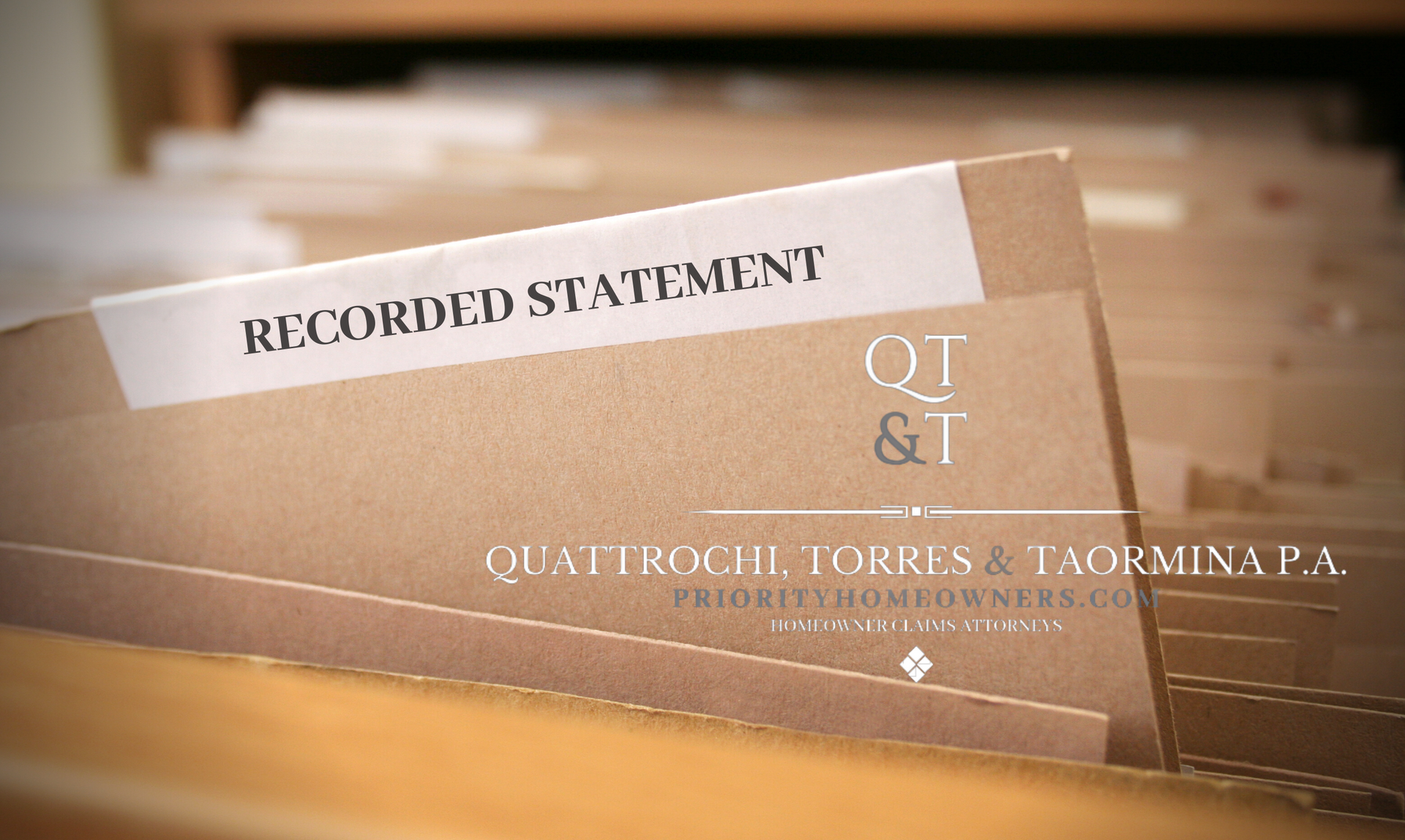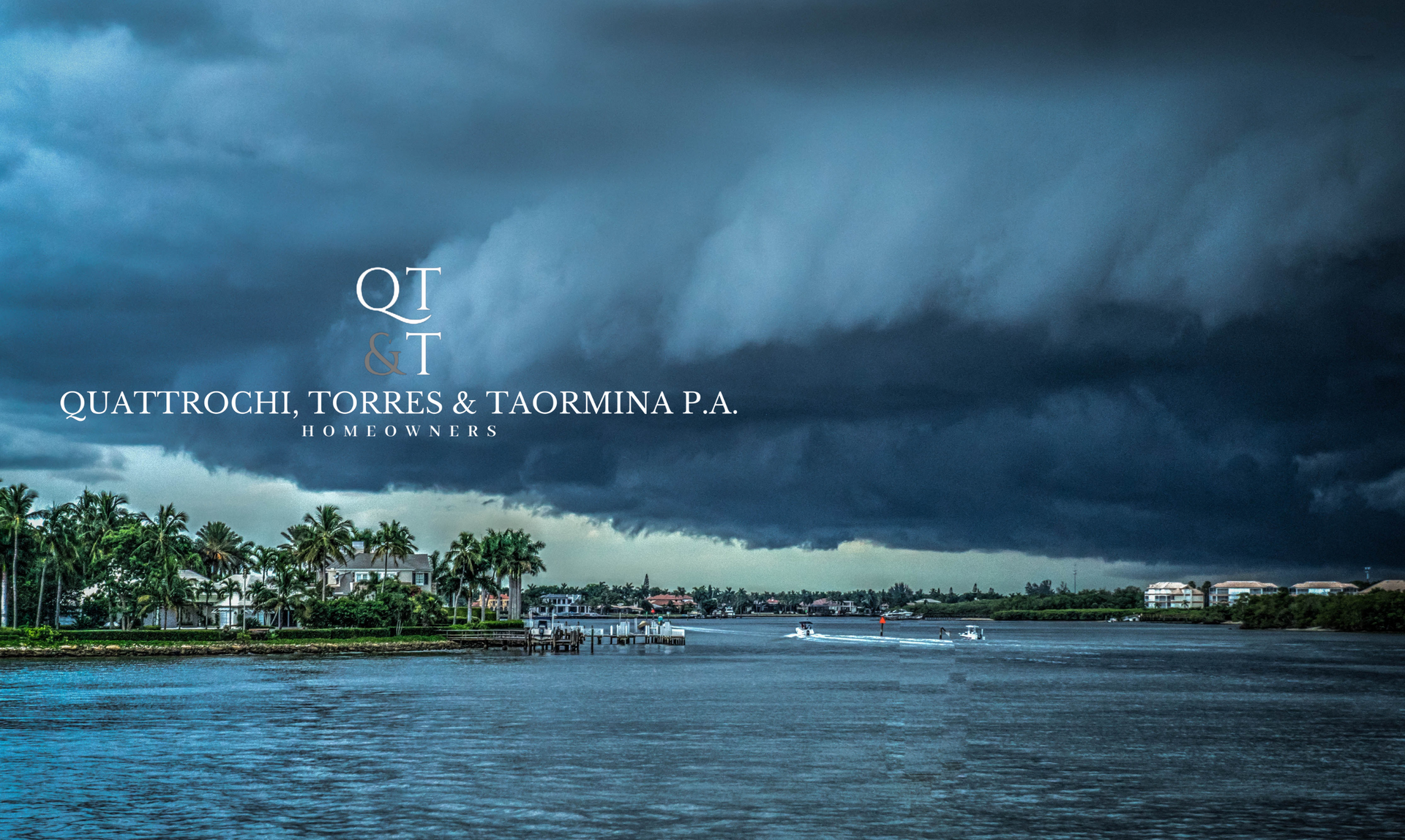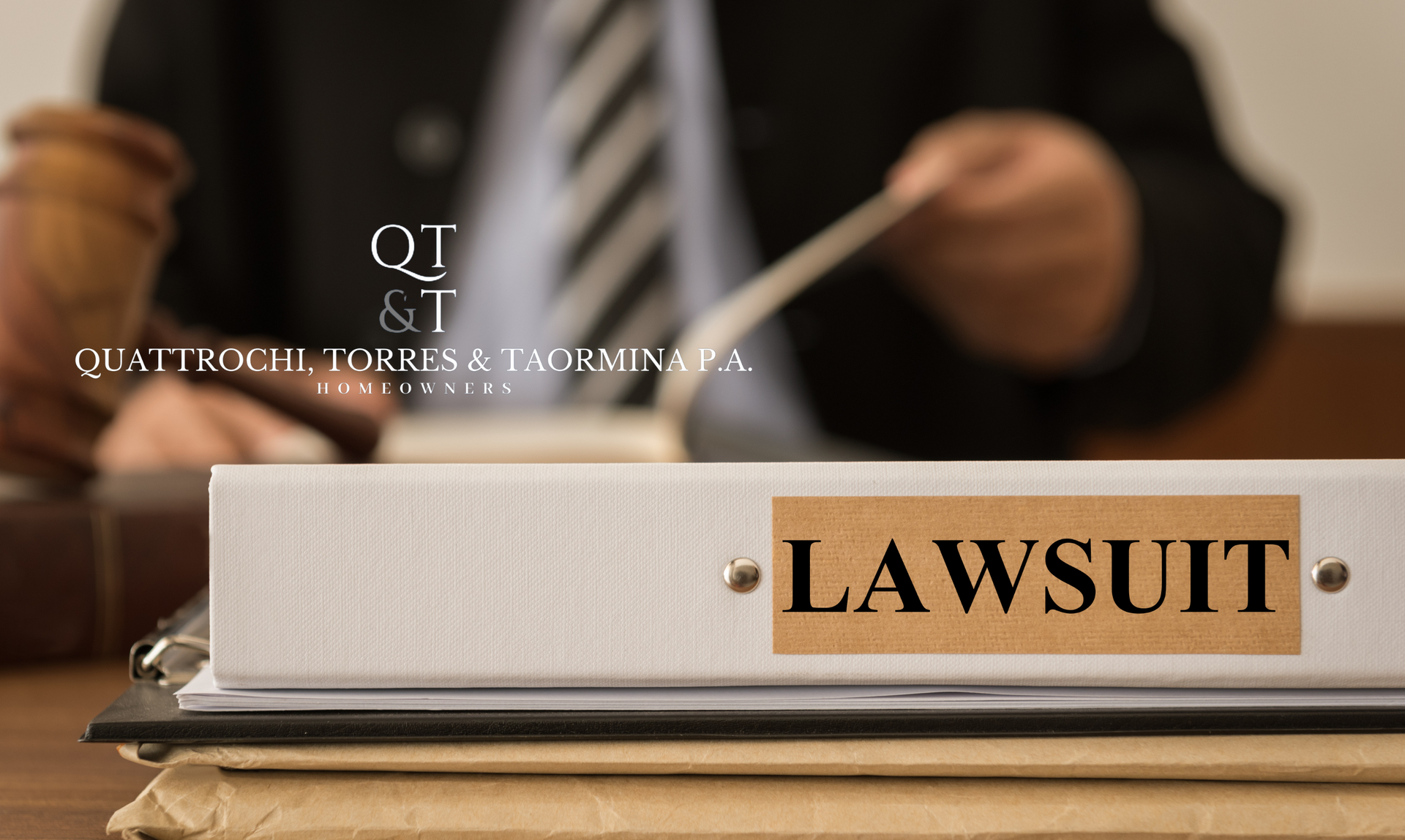The Hidden Risk to Shingle Roofs from Tornado Warning Windstorms
As homeowners, we often take comfort in the shelter of our houses, trusting that they will protect us from the elements. However, when it comes to severe weather events like tornadoes, the vulnerability of our roofs can be a sobering reality. While direct hits from tornadoes are obviously destructive, what many may not realize is that even indirect windstorms associated with tornado warnings can wreak havoc on roofs, particularly those with shingle coverings.
Shingle roofs, ubiquitous in many residential areas, are especially susceptible to damage from high winds. Unlike metal or tile roofs, which may offer better resistance, shingle roofs can suffer significant harm even from winds that don't directly hit them. Let's delve into why shingle roofs are vulnerable and what homeowners can do to mitigate the risks.
The Fragility of Shingle Roofs
Shingle roofs consist of overlapping layers of individual shingles, typically made from materials like asphalt or fiberglass. While they provide adequate protection under normal weather conditions, they can be easily compromised by strong winds, especially when those winds create uplift forces.
During an indirect windstorm associated with a tornado warning, the wind patterns can become erratic and turbulent. Even if the tornado itself doesn't touch down, the surrounding winds can still reach high speeds and change direction suddenly. These turbulent winds can create upward pressure beneath the shingles, causing them to lift, crack, or tear away from the roof deck.
Additionally, shingles can become brittle over time due to exposure to sunlight, temperature fluctuations, and other environmental factors. This brittleness makes them more prone to damage from high winds, as they are less flexible and more likely to break upon impact.
Common Types of Damage
Indirect windstorms associated with tornado warnings can cause various types of damage to shingle roofs:
1. Shingle Loss:
High winds can lift shingles and tear them away from the roof, leaving the underlying structure exposed to the elements.
2. Shingle Creasing:
When strong winds can cause shingles to bend up and down, creating ridges. The singles may also push against each other, causing creases in the upper shingle.
3. Shingle Damage:
Flying debris carried by the wind can impact shingles, causing cracks, dents, or tears. Once damaged, shingles are less effective at repelling water, increasing the risk of leaks and water damage inside the home.
4. Loosening of Fasteners:
The force of the wind can loosen the nails or adhesive strips that hold the shingles in place, compromising the integrity of the entire roof system.
5. Granule Loss:
High winds can strip away the protective granules on the surface of asphalt shingles, reducing their durability and lifespan.
Mitigating the Risks
While it's impossible to completely eliminate the risk of damage to shingle roofs during severe weather events, there are steps homeowners can take to reduce the likelihood and severity of damage:
1. Regular Inspections:
Conduct routine inspections of your roof to identify and address any signs of wear and tear before they escalate into larger issues.
2. Reinforcement:
Consider reinforcing your roof with additional fasteners or adhesive to improve its resistance to uplift forces.
3. Trimming Trees:
Trim back overhanging branches that could potentially damage your roof during a windstorm.
4. Upgrading Shingles:
Invest in high-quality, impact-resistant shingles that are designed to withstand strong winds and flying debris.
5. Professional Installation:
Ensure that your shingles are installed properly by hiring experienced roofing professionals who follow manufacturer guidelines.
If you or your loved one have suffered shingle damage due to wind from a Tornado Warning event, please call QT&T at 866-480-3124 for a free claim evaluation. Our experienced team is dedicated to helping you navigate the complexities of insurance disputes and ensuring you receive the coverage you rightfully deserve. Don't let a denied claim leave you stranded – contact us today and let us advocate for you.

By Jesse Diaz
•
October 3, 2024
The recent CBS News 60 Minutes report on Florida's insurance industry highlights whistleblower claims that several insurance companies altered damage assessments after Hurricane Ian in 2022 to minimize payouts to homeowners. Independent adjusters who inspected storm-damaged properties say that their reports, which recommended significant repairs, were changed by the insurers to drastically reduce compensation. This practice allegedly left many policyholders with payouts far below the actual cost of repairs. The whistleblowers accused insurers of reducing claims by up to 90%, sparking outrage as many Floridians continue to struggle with the financial aftermath of the storm. The report raises concerns about the lack of transparency in the insurance claims process and calls for greater regulatory oversight to prevent such practices from continuing. Calls for action from Florida’s political leadership and legal reform are growing as the scandal unfolds. Click here it read CBS News 60 Minutes' Report: https://www.cbsnews.com/news/florida-whistleblowers-hurricane-ian-insurance-60-minutes-transcript/

By Jesse Diaz
•
July 2, 2024
Dealing with a homeowner's insurance claim can be a real headache, especially when you’re already stressed about damage from storms or water leaks. That's where QT&T comes in. We're experienced, personal attorneys here to make the process as smooth as possible for you. Here’s how we can help: We’ve Got the Experience At QT&T, we know insurance claims inside and out. Our team has years of experience handling homeowner's insurance claims, so we understand all the ins and outs of the process. We know how insurance companies operate and the tricks they use to deny or underpay claims. With us on your side, you’ll have expert guidance to navigate through all the red tape. No Upfront Costs Worried about legal fees? Don’t be. We work on a contingency fee basis, which means you don’t owe us a dime unless we win your case and recover money for you. This way, you can focus on getting your life back to normal without stressing about legal bills. Less Stress, More Support Insurance companies can be tough to deal with, but you don’t have to handle it alone. We take care of everything for you, from filing your claim to negotiating with your insurer. Here’s what we do: Understand Your Policy: We’ll review your insurance policy so you know exactly what’s covered. Gather Evidence: We’ll collect and organize all the necessary documents, photos, and expert opinions to back up your claim. Negotiate for You: We’ll handle all the communications with your insurance company, fighting for a fair settlement. Appeal if Needed: If your claim gets denied, we’re ready to appeal and keep pushing until we get results. Why QT&T? Personal Attention: We treat you like a person, not just another case. Our attorneys will get to know you and your situation so we can provide the best support. Proven Track Record: We’ve successfully handled many insurance claims and know how to get results. No Win, No Fee: You only pay if we win. It’s that simple. Committed to You: We’re dedicated to fighting for your rights and won’t back down until we get you the compensation you deserve. Let’s Get Started! Don’t let the stress of an insurance claim get you down. Contact QT&T for a free consultation and let us handle the hard stuff. We’re here to help you every step of the way, making sure you get the compensation you deserve. Relax and let QT&T take care of your insurance company hassles!

By Jesse Diaz
•
July 2, 2024
Understanding State Farm’s “Immediate Notice” Standard for Reporting Damage State Farm has recently implemented a new standard for reporting potential storm and water leak damage, termed "Immediate Notice." However, the term "immediate" remains ambiguous, as State Farm has yet to provide a clear definition of what constitutes "immediate" in this context. This lack of clarity can lead to confusion and potentially unfair claim denials. What Does “Immediate” Mean? In practice, "immediate" could be interpreted to mean as soon as the damage is discovered, but without a definitive timeframe provided by State Farm, policyholders are left guessing. Recent deposition testimony has revealed that State Farm grants its Special Claims Examiners the discretion to decide whether a claim was reported in a timely manner on a case-by-case basis. This arbitrary decision-making process can result in inconsistent and unfair outcomes for policyholders. Don’t Be Discouraged by Denial Letters If you receive a coverage denial letter from State Farm stating that you reported your claim too late, don’t be discouraged. We have encountered cases where State Farm initially denied claims but later approved them after further review. For example, we’ve seen claims approved even when reported 16, 83, and over 300 days after a storm. Each claim is unique, and the timing of your report should not be the sole determinant of your coverage eligibility. Seek Professional Help Given the complexities and potential for arbitrary decisions by State Farm, it is crucial to seek assistance from an experienced law firm if your homeowner's insurance claim is wrongfully denied. An attorney with expertise in insurance claims can help you navigate the appeals process, gather necessary evidence, and advocate on your behalf to overturn unjust denials. In Summary State Farm’s vague “Immediate Notice” standard underscores the importance of understanding your policy and seeking professional advice when facing a denied claim. If you find yourself in this situation, remember that you have options, and that professional help is available to ensure you receive the coverage you deserve. For more information or assistance with your homeowner's insurance claim, contact our experienced legal team today. Quattrochi, Torres & Taormina, P.A. We are here to help you fight for your rights and secure the coverage you need. Consultations are free and we don’t get paid unless we win for you! (407) 452-4918

By Jesse Diaz
•
June 19, 2024
Hurricane Ian may have struck over a year ago, but if you're still grappling with unresolved damage to your home, there's good news: it's not too late to file your insurance claim. While it's always ideal to report a claim as soon as possible, we understand that sometimes life gets in the way. The key is not to lose hope—it's about taking action now. At our firm, we specialize in helping homeowners navigate the complex process of filing insurance claims for storm damage, no matter how much time has passed. We hire experienced engineers to thoroughly investigate your property, ensuring that any damage caused by Hurricane Ian is accurately documented. This meticulous approach can make a significant difference in the success of your claim. Why Choose QT&T? 1. **Experienced Evaluation**: Our engineers are skilled at identifying and assessing storm damage, even if it has been over a year since the hurricane hit. They will provide a detailed report to support your claim. 2. **Dedicated Advocacy**: We are committed to fighting for your rights as a homeowner. Our team will handle all the negotiations with your insurance company, ensuring that you get the compensation you deserve. 3. **No Win, No Fee**: We believe in our ability to secure a positive outcome for you, which is why we operate on a contingency basis. You only pay if we win your claim. Filing an insurance claim late can be daunting, but with the right support, it’s entirely possible to achieve a favorable result. Don't let the opportunity slip away. Contact us today to start the process and take the first step toward restoring your home. Schedule your Free Consultation Today!

By Jonathan Amador
•
April 22, 2024
Learn what to expect during a Recorded Statement for your Home and Property insurance claim. Our blog outlines common questions asked by insurance carriers and provides valuable insights to help you prepare. If you need guidance or representation, contact QT&T at 866-480-3124 for a free claim evaluation.

By Jonathan Amador
•
April 22, 2024
Facing hurdles with your business insurance claim? Discover how QT&T's seasoned Florida attorneys can guide you through the complexities, from denied claims to valuation disputes. With expert legal assistance, ensure your business receives the compensation it deserves. Contact us today for a free claim evaluation.

By Jonathan Amador
•
April 8, 2024
Facing insurance issues after Hurricane Ian? Learn how to get the compensation you deserve with our expert tips. Discover common problems with claims and steps to challenge underpayments or denials. Don't navigate the complexities alone – contact QT&T for a free evaluation. Let us advocate for you and ensure you're properly covered.






